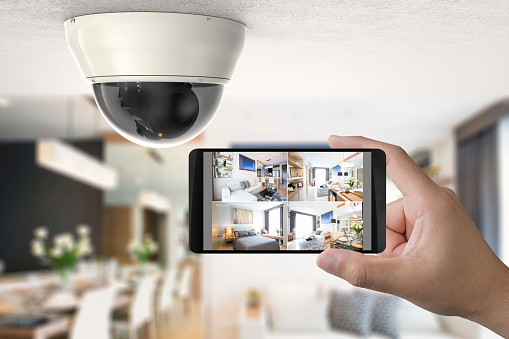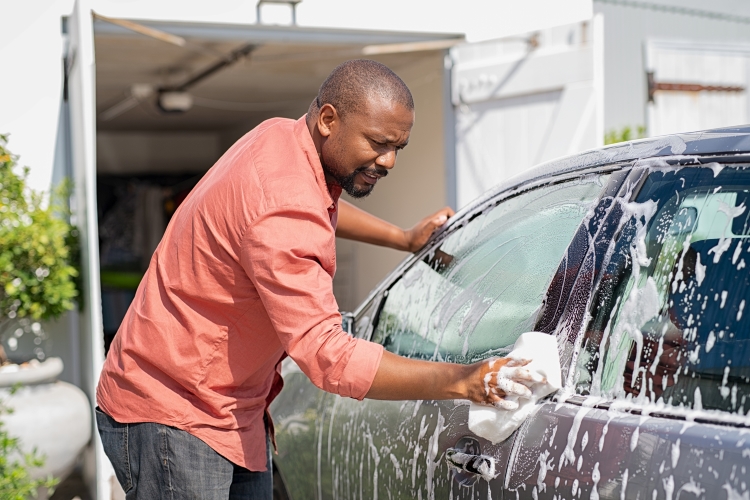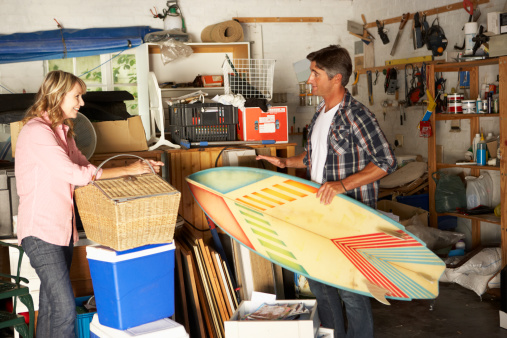After I had house guests who locked themselves out and then climbed in through the window, I bought myself a smart lock — and an old-fashioned bolt for the window.
A smart lock is a simple introduction to do-it-yourself, or DIY, security. Installing and using one doesn’t require being a technological genius, and they are light years ahead of the days of calling a locksmith to change the locks when a relationship went bad.
My smart lock is — well, smart. It can be opened remotely or up close using my mobile phone —I just tap the app and enter a four-digit code. It also can be opened with an electronic keypad that lights up on the lock. Apple’s Siri, Amazon’s Alexa, and Google’s George will lock and unlock it with a voice command. Or it unlocks the old fashioned way — with a key. That’s a nice feature in hurricane season when both the electricity and internet can disappear.
My lock can store up to 30 codes. I’m not sure why I’d want that many. I gave one to my daughter, one to my neighbor, and one to a good friend. I could give temporary lock codes to service people, but I prefer to have them text me when they arrive, so I can let them in remotely.
However I do it, the lock keeps a record of locking and unlocking. The info pops up on the front screen of my phone and is then stored as history in the app. I wish I had had that info when my children were teens.
Start With a Smart Lock
My daughter’s moderately handy husband installed the lock, which is made by Schlage, the same brand as the old-fashioned lock we removed. The holes for the lock and the throw were identical, so all he needed was a screwdriver.
The lock I bought is compatible with Apple’s HomeKit, Alexa-enabled devices via Wink, and Samsung’s SmartThings hubs, all of which manage all kinds of smart devices. But you don’t need a hub to operate this smart lock. Schlage sells a Schlage Sense Wi-Fi adapter for those who aren’t ready for a full-on smart home.
Other smart locks that are compatible with both Apple and Android phones include:
- Friday. Friday allows you to retrofit your current single cylinder deadbolt. It is compatible with Google Home and Apple HomeKit.
- August. This brand attaches to the inside of an existing deadbolt with a thumb turn. It can be used with keys or without.
- Yale Assure. Yale’s electronic lock can be used with a variety of older, more traditional security systems.
Ding Dong, the Doorbell is Watching You
Doorbell cameras are another step up on the DIY security ladder. They are sold as stand-alone devices and as accessories for hubs. Hardly anyone rings my doorbell, so when it happens, it makes me nervous. I find peepholes worthless because they are so small. Having a doorbell camera and being able to look at my mobile phone to see that the visitor is a uniformed delivery person or the little girl next-door selling Girl Scout cookies could be reassuring. It also has night vision if, for some reason, the light outside the door isn’t working.
If I had limited mobility, a doorbell camera would save me from having to make an uncomfortable trek to the door. It also could be convenient to be able to answer the door from anywhere. It could keep me from missing deliveries because these devices offer two-way conversations with the person at the door.
There are downsides. Some doorbell cams will video the visitor, which you might want to do for security reasons, but saving the video generally requires a monthly fee. Plus, most stand-alone devices aren’t compatible with Apple HomeKit or Amazon Echo hubs, so they don’t integrate easily with other popular DIY security devices.
SkyBell has partnered with Nest, which offers a DIY security system with a broad range of features, including its own video doorbell. The SkyBell product integrates with Nest, but you might be better off with the Real McCoy Nest product.
Two other video doorbells to check out are:
DIY Home Security with Cameras Everywhere
When we started leaving our home empty for part of the year, we invested in a simple, six-camera home security system. We had previously installed a Nest thermostat and liked it because it programmed itself. It will raise the temperature when we are home and lower it when we’re not. It can be monitored and changed from anywhere, and it gives us money-saving advice about our heating and cooling patterns. Adding Nest security cameras was mostly plug and play, although screwing the outdoor cameras into the siding required a drill. In the end, we hired an electrician to do the installation because Nest cameras have to be plugged in and we were fussy about cords.
We put a camera on the front porch that allowed us to see the porch, yard, front door, and the driveway. We also put one on the back porch that surveyed the yard and the back door. The camera in the windowless garage was an infrared that allowed us to see in the dark, so we didn’t have to leave a light on constantly. We put the remaining cameras in the living room, the kitchen, and, after much discussion, the bedroom — safety overcame modesty. If that doesn’t seem like enough, Nest can accommodate the additions.
The cameras shoot video constantly and retain it for three hours. You watch it on your phone or iPad. If you want video saved for longer, there is a charge depending on how long you want it saved — up to a year. The quality is quite good, and the cameras learn the difference between family members and strangers. You can tell the system to ignore familiar faces or let you know when your teen actually got home.
An odd noise will trigger an alarm, but the dog barking won’t. There is also a microphone, so you can talk to the person you’ve caught on camera and that person can talk back. If you catch the dog on the sofa, you can order him off (and sometimes he obeys).
Nest is among the most expensive of the DIY home security systems, but if you’ve invested previously in Nest, adding on is relatively inexpensive. If you are starting from scratch, there are other possibly better, choices.
If you have an Apple HomeKit control device, you can use it to install an array of cameras — wired and wireless. You also can add wireless motion sensors and wireless window contact sensors.
If you are an Android user, consider the Samsung SmartThings hub, which many consider to be the best of the DIY home security management devices because it is compatible with a wide variety of third-party products. Critics do warn that SmartThings is better for do-it-yourselfers who are geekily talented.
Next: Add Smoke, Carbon Monoxide and Water Sensors
Once you have a HomeKit controller or a SmartThings hub, it makes sense to tie in your smoke, carbon monoxide, and water and gas leak sensors. Water and gas leak sensors are fairly new. They detect moisture from leaking pipes or leaking gas. Some of the devices just alert you. Others can be configured to turn the systems off.
The smartest smoke and carbon monoxide alarms send a message to your phone alerting you to the danger before setting off an alarm. Instead of a chirp in the wee hours warning you that the batteries are low, it sends you a civilized message that you can schedule. Nuisance alarms can be turned off via the phone, so you don’t have to stand on a chair and be tempted to take the battery out and throw it away. These devices also can be connected to your security cameras and other smart home components so you get a double dose of warning.
CNET’s smart smoke detector buying guide says NestProtect is the best, but it also likes models from First Alert and Halo Smart Labs.
You might consider adding some lighting that turns on and off whether you are home or not. Most of them are just light bulbs or smart outlets and not especially expensive. These simple devices are tops on the list of ways to prevent burglaries.
If you decide to go this whole-enchilada route, consider the SimpliSafe home security system, which is a great option because the hardware is affordable and the system is easy to install. SimpliSafe also offers reasonably priced, no-contract-required monitoring. Alerts go to the security team and someone gives you a call. If you don’t respond and identify yourself promptly and properly, they will call the police or fire department.
Most insurers offer a break on the price of your homeowners insurance if you have a monitored security system. This can save you 10% to 20%, which will offset the cost of the monitoring.






